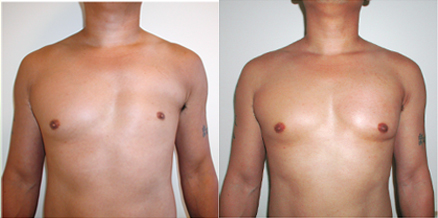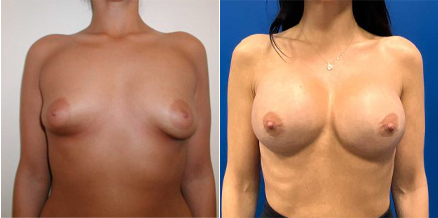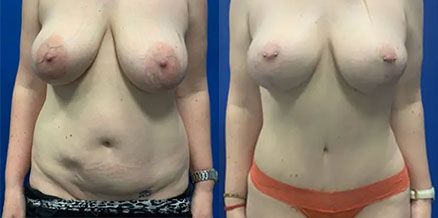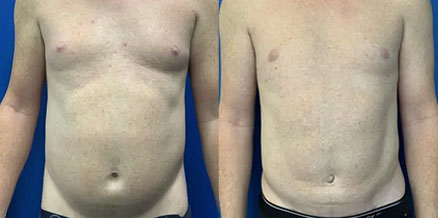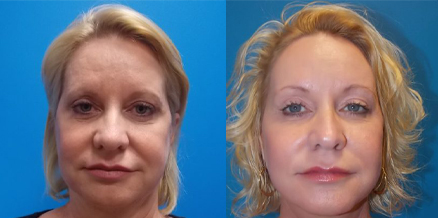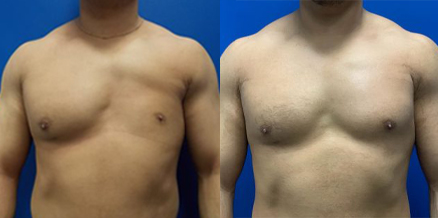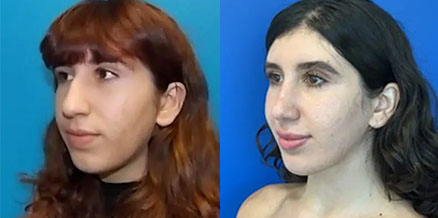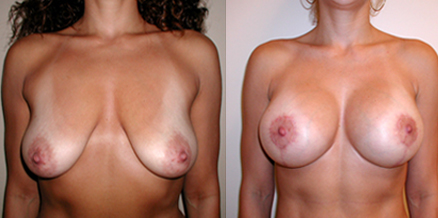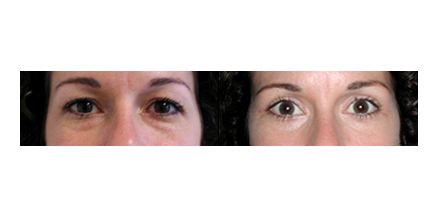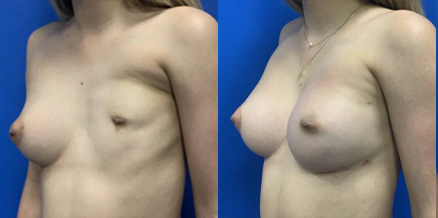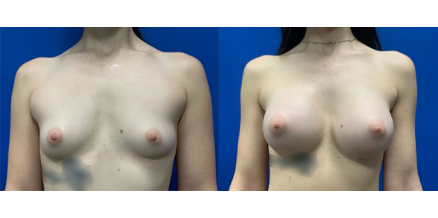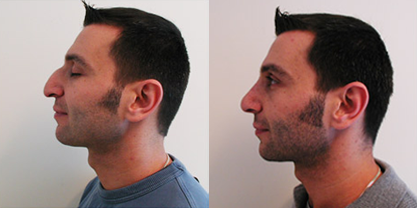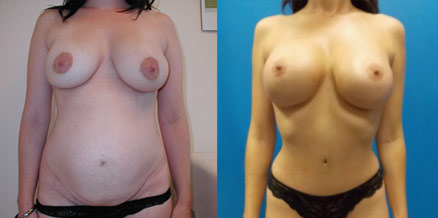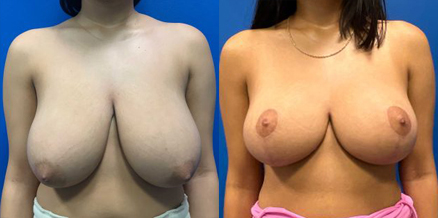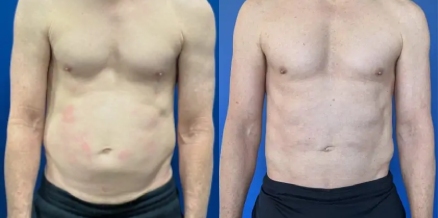Congenital Breast Conditions
Conveniently located to serve the areas of Beverly Hills, West Hollywood, Los Angeles and Pasadena, CA

Congenital breast conditions are developmental abnormalities that originate during fetal growth and affect both men and women. (1) Many individuals experiencing congenital breast conditions often seek surgical correction to achieve a more desired breast shape, size, or symmetry. Plastic surgeons can improve issues like tuberous breasts, breast asymmetry, Poland Syndrome, and supernumerary breast and nipple. (2)
Mossi Salibian M.D. is a board-certified plastic surgeon highly experienced in breast procedures. Patients who would like to address and improve the appearance of their congenital breast condition can call our office near Beverly Hills at (310) 550-0750 to schedule an appointment. You can alternatively fill out our contact form, and we will be in touch with you shortly.
Contents
About Congenital Breast Conditions
Tuberous Breasts
Tuberous breasts are when the breasts are underdeveloped or have abnormally formed into a shape that is elongated and almost cone-like. Patients with tuberous breasts may be dissatisfied with their overall appearance and the way that the breasts look underneath clothing and undergarments. Tuberous breasts can be categorized into different types, which are distinguished by their unique characteristics:
- Type I: This type exhibits slight elongation or constriction of the breast and a minimal degree of ptosis (sagging).
- Type II: Here, there is a significant constriction of the lower pole of the breast, resulting in a more tubular appearance. The base width of the breast is narrower than typical anatomy.
- Type III: This is the most pronounced form of tuberous breasts. It features extreme constriction, high-set nipples, prominent areolas, and often some degree of breast asymmetry.
Patients may have different degrees of tuberous breast deformities between the breasts or have a normally developed breast on one side and a tuberous breast on the other side. Tuberous breasts present unique issues that Dr. Salibian addresses with a number of techniques; such as the use of breast implants, fat grafting, breast pocket, and nipple sizing procedures including but not limited to lifts and other specialized procedures. Fat transfer or fat grafting is often done to provide the breasts with a more normal shape and natural contour. The cone-like structure of the breast is corrected by gently releasing the tight ligaments and connective tissue that contribute to the tuberous breast shape. Breast implants of different sizes and shapes are often used to provide more structure to the breasts. (3)
Breast Asymmetry
Breast asymmetry is when the breasts are two noticeably different shapes or sizes. While it is very common for the breasts to be at least slightly asymmetrical, some patients who experience more prominent asymmetry may struggle to find bras or tops that fit correctly. Dr. Salibian can give the breasts a more balanced look by using reconstructive techniques such as variations of the breast lift, breast reduction, and sometimes a combination of breast lift with breast implants, and fat grafting. (4) He can precisely tailor any of these procedures to address the varying degrees of asymmetry that patients may have.
Poland Syndrome
Poland Syndrome is when the pectoralis major muscle is missing or partially missing from the chest wall. This congenital anomaly usually occurs on the right side of the chest and can occur in both men and women. In women, it is associated with a smaller breast and nipple which is also positioned higher on the Poland Syndrome side than on the non-affected side. Like other congenital breast conditions, Poland Syndrome can cause self-consciousness in patients, or cause them to feel the need to conceal this aspect of their appearance. With Poland Syndrome in men and in women, the breast tissue can sometimes be completely absent (amastia) or without a nipple (athelia).
Depending on the various factors unique to each patient, Dr. Salibian will design a procedural plan that may involve inserting a tissue expander and later a breast implant and other corrective and symmetrizing procedures as fat transfer which will restore volume to the misshapen part of the chest, or a reconstructive muscle flap transposition or a custom-made implant. In most patients, the position of the nipple is also adjusted for better symmetry with the normally developed breast.
Men with Poland Syndrome are usually addressed by the use of a custom-made semi-solid silicone chest implant that mirrors the appearance of the opposite pectoral or chest muscle. Dr. Salibian will take a personalized approach to each Poland Syndrome patient for the best possible correction to achieve the desired symmetry and appearance. (5)
Supernumerary Breast and Nipple

Patients can also be born with accessory breast tissue or supernumerary breasts and nipples, also known as polymastia, polythelia (many nipples) that can be on one side or both sides of the chest. The accessory breast tissue develops along the milk line that is from the axilla to the pubic or groin area. This occurs when the embryonic breast tissue located along the milk line of the growing embryo does not fully resorb or regress and therefore a vestige of the breast tissue and/or nipple is left at the time of birth. Supernumerary breast tissue is most commonly seen at the axilla; sometimes on one side only and rarely on both sides. (6)
When the accessory breast tissue is located at one’s axilla, it is easily excised where the final incision is hidden within the natural axillary fold. If the excess breast tissue is located elsewhere along the milk line, it is excised and carefully closed with minimal scarring.
Cost of Breast Asymmetry Correction in Los Angeles
The cost of breast procedures in Los Angeles varies from patient to patient based on their presentation and the procedures needed for correction. Some patients may require more complex solutions to their congenital breast condition, as each of these anomalies comes with its own variations.
To obtain a personalized cost estimate for your breast procedure, please call our office near Beverly Hills at (310) 550-0750 to schedule a consultation. You can also fill out our contact form.
FAQ
What causes Poland Syndrome?
The actual cause of Poland Syndrome is not yet known. It is thought to be a failure in the development of the blood supply that nourishes the chest and surrounding muscles, skin, and soft tissues during the fifth to sixth week of gestation. It is observed more commonly in men than in women, and more often seen at the right chest than at the left, and has no ethnic or geographical preponderance.
What are my options for correcting breast asymmetry?
Surgical options are highly individualized and include but are not limited to symmetrizing breast augmentation, breast reduction, mastopexy, and fat grafting, among others. Your specific procedure(s) of choice will depend on the nature of your asymmetry.
How long does it take to complete a breast procedure?
For treating tuberous breasts and Poland Syndrome, the procedure takes usually 3-4 hours. A procedure to correct breast asymmetry can take anywhere from 2-4 hours. Each patient’s presentation is unique and therefore the techniques Dr. Salibian uses to correct are highly individualized and require an acute sense of aesthetic sensibility, symmetry, and functionality for the optimum final outcome.
References
- Borsuk D, Caouette-Laberge L. Congenital Anomalies of the Breast. Seminars in Plastic Surgery. 2013;27(01):036-041. doi:https://doi.org/10.1055/s-0033-1343995
- Gastman BR, DeRoss AL, Moreira A. Congenital breast deformities: Anatomical basis and surgical approaches for optimal aesthetic outcomes. 2020;26(7):1302-1307. doi:https://doi.org/10.1111/tbj.13798
- Grella R, D’Andrea F, Giovanni Francesco Nicoletti, Lanzano G. Tuberous Breast Management: A Review of Literature and Novel Technique Refinements. 2022;10(12):e4708-e4708. doi:https://doi.org/10.1097/gox.0000000000004708
- Maxwell G. Breast asymmetry. Aesthetic Surgery Journal. 2001;21(6):552-562. doi:https://doi.org/10.1067/maj.2001.121139
- Tafti D, Cecava ND. Poland Syndrome. PubMed. Published 2022. https://www.ncbi.nlm.nih.gov/books/NBK532259/
- Grossl NA. Supernumerary breast tissue: historical perspectives and clinical features. Southern medical journal. 2023;93(1). Accessed September 23, 2024. https://pubmed.ncbi.nlm.nih.gov/10653061/

